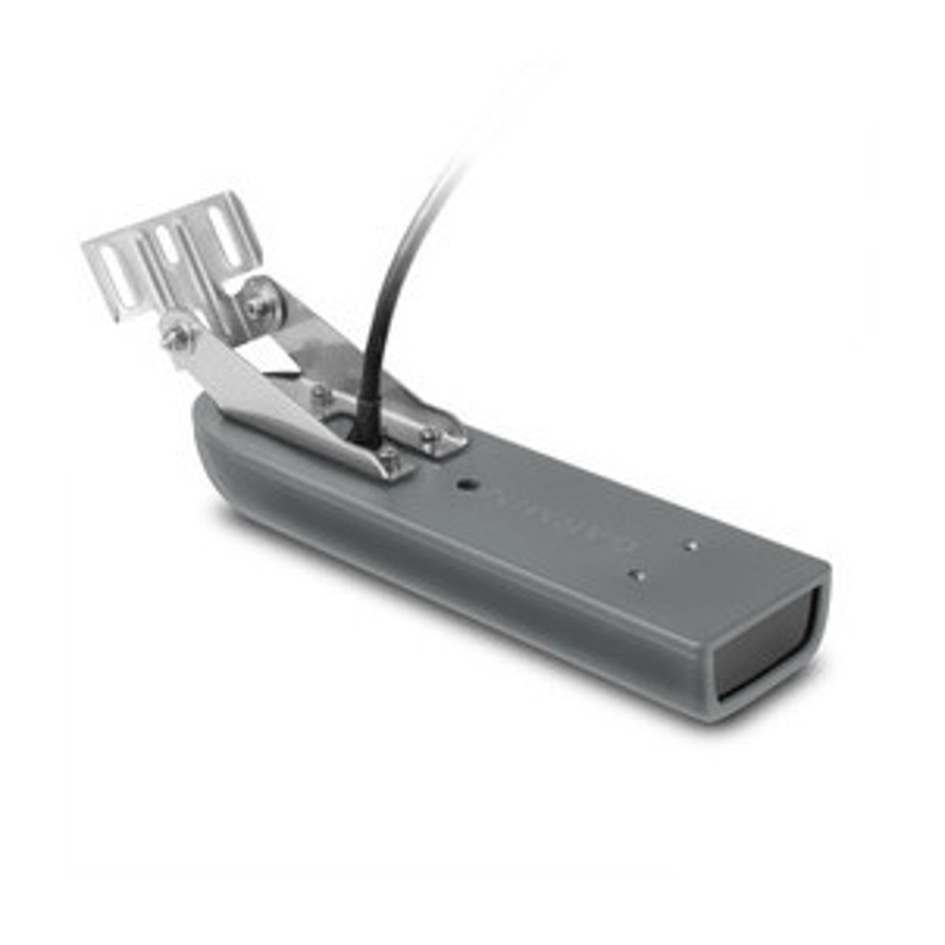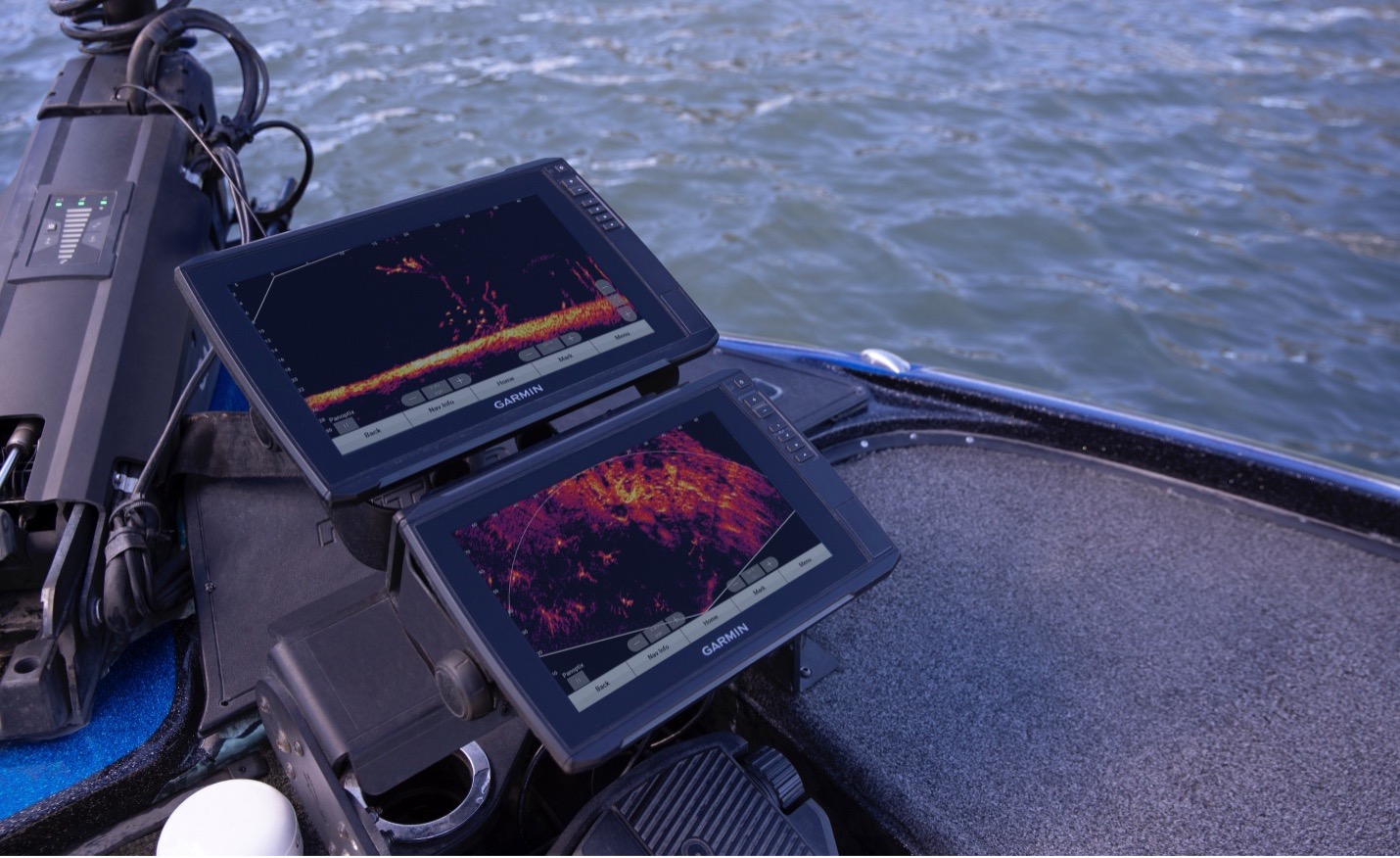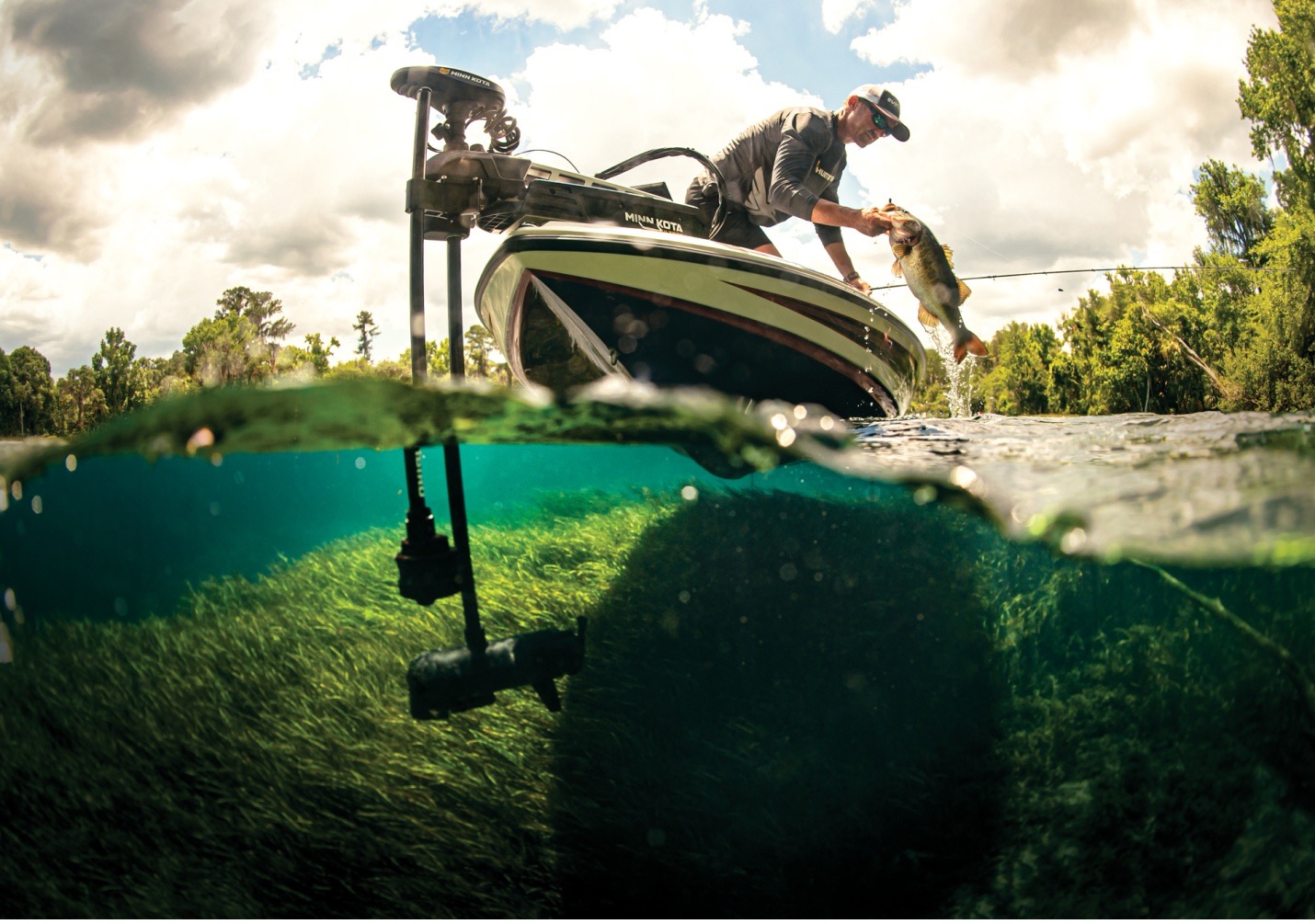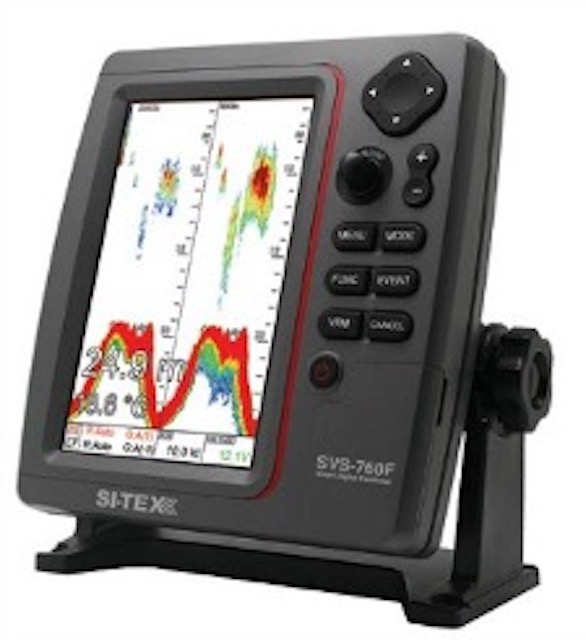Why Your Boat Needs a New Depth Sounder, Part II
Continuing our look at the technology of the new crop of depth sounders . . .
Transducers are the heart of a sonar system, and choosing the right setup for your boat is critical to its utility.
Transducers for powerboat use are typically designed either to shoot through the hull or to be mounted on the transom. More recently, transducers designed for trolling motor mounting have created “steerable” sonar useful for small boats.

Transducers designed to be mounted in a hole through the bottom of the boat are also available, providing a very clear reading because of the direct contact with the water, but because of the concern with leaks they require specialized professional installation.

Transducers designed for mounting inside the hull can only shoot through solid fiberglass—they don’t work on composite hulls or aluminum hulls. They’re favored by the majority of bass boat, bay boat and high performance offshore boat owners.

Transom-mount transducers are usually mounted on the starboard side of the transom because this is typically the side where the propeller blades are moving downward. For twin outboard or sterndrive applications, they’re mounted between the two drives, either on or just off of the centerline. The mount allows adjustment up or down for the least aeration and best images at speed.

The 2022 Class of Depthsounders
Furuno: The Furuno CSH8LMK2 Omni is a high-end multi-element scanning sonar that has rapidly gained favor among offshore sportfishers for the amazing capability to spot marlin, swordfish and tuna in the depths. It deploys from a housing in the hull, auto-retracting at speeds over 16 knots. The company also makes a wide variety of stand-alone fish finders, and has long been a standard for commercial fishers; Furuno.com.
Garmin
The new LiveScope™ Plus System, the latest addition to Garmin’s live-scanning sonar lineup has 35% improved target separation over the previous system according to the company. With sharper resolution, reduced noise, and Garmin’s clearest images, it’s easier than ever to see structure, bait and fish around the boat in real time, even while stationary.

With three modes – Forward, Down and Perspective – the LiveScope Plus System also includes “Perspective Mode Mount” which can give a virtual overhead view of the waters ahead. Garmin says that fish species are often identifiable thanks to the new clarity, and even some fishing lines show up on-screen with these units; www.garmin.com.
Humminbird
The company’s MEGA Side Imaging now allows anglers to see out to 200 feet to each side, while MEGA Down Imaging reaches up to 200 feet below the boat, increasing range as much as 60 percent over previous models.

MEGA Side Imaging and MEGA Down Imaging are standard with Humminbird's APEX and SOLIX models, and are available on select HELIX models. Additionally, the accessory MEGA 360 Imaging transducer is compatible with all APEX, SOLIX and select HELIX models; www.humminbird.com.
Lowrance, a Navico brand, offers a full range of depthsounders from 5” diagonal up to 16”, with the flagship touch-screen HDS 16 including integrated support for high-resolution ActiveTarget™ Live Sonar, Active Imaging™ 3-in-1 with Lowrance CHIRP sonar, SideScan/DownScan Imaging, FishReveal™ and a linkup with the company’s Ghost Trolling Motor. The “Hook” line includes affordable fish finders with GPS from 5 to 9 inch screens; www.lowrance.com.
Raymarine
The problem-solving combination of Raymarine’s family of Axiom® multifunction displays and intuitive LightHouse operating system now support Sirius XM Fish Mapping, as well as Raymarine's full range of sensors and add-on modules.
The company’s LightHouse OS and Axiom support today’s best-known digital charts, including Raymarine’s LightHouse Charts, CMOR Mapping, Strikelines, Navionics and C-Map; www.raymarine.com.
Simrad
Simrad has unveiled its latest generation of MFDs—the NSX series—with a new operating system that features additional functionality, easier integrations and support for a wide range of third-party applications. Boating anglers can utilize NSX with Active Imaging sonar, chirp sonar, SideScan, DownScan and FishReveal.
Available in 7-, 9- and 12-inch touch-screen sizes, the MFDs feature high-resolution bathymetry showing contour lines down to one-foot interval with compatible charts. Boaters can edit NSX displays with a drag-and-drop system to suit their needs. NSX features extensive 3rd party app integration to support the widest range of functionality. Starting at $1,049; simrad-yachting.com.

SI-TEX
SI-TEX makes commercial-grade sonars with amazing power, with ranges from 600 to 1000 watts. The CVS 128 stores up to 10 screen images in built-in memory for recall later and a variable tone system alerts the captain to what’s under the boat, with different tones for bait and large fish. The SVS-760 also features an SD card slot, allowing fishermen to back up information and record data on important fishing spots; www.si-tex.com.